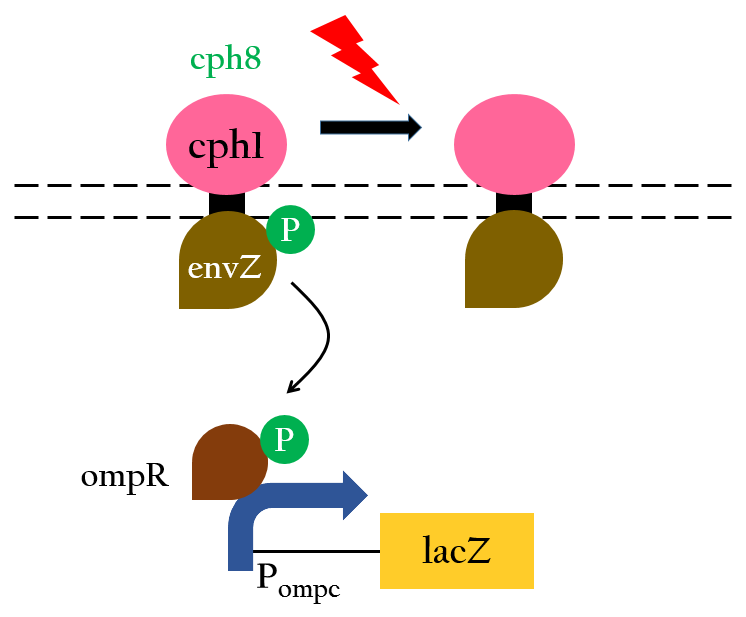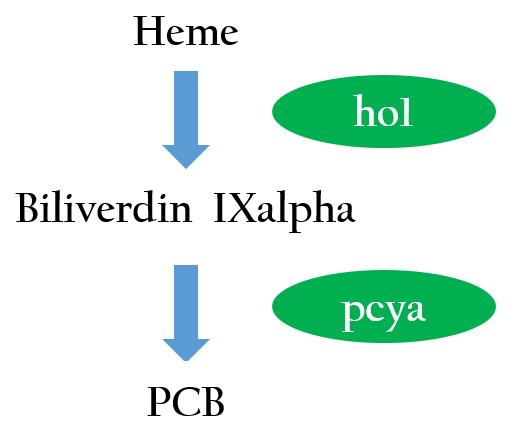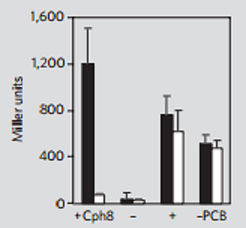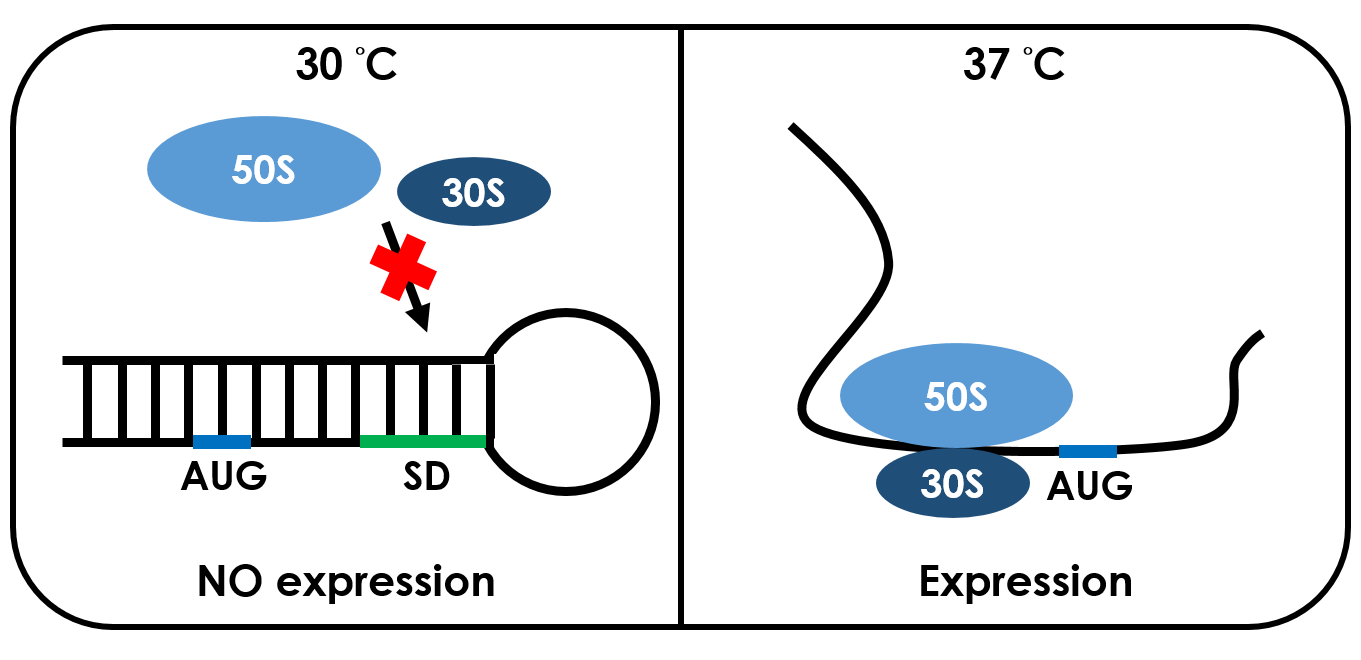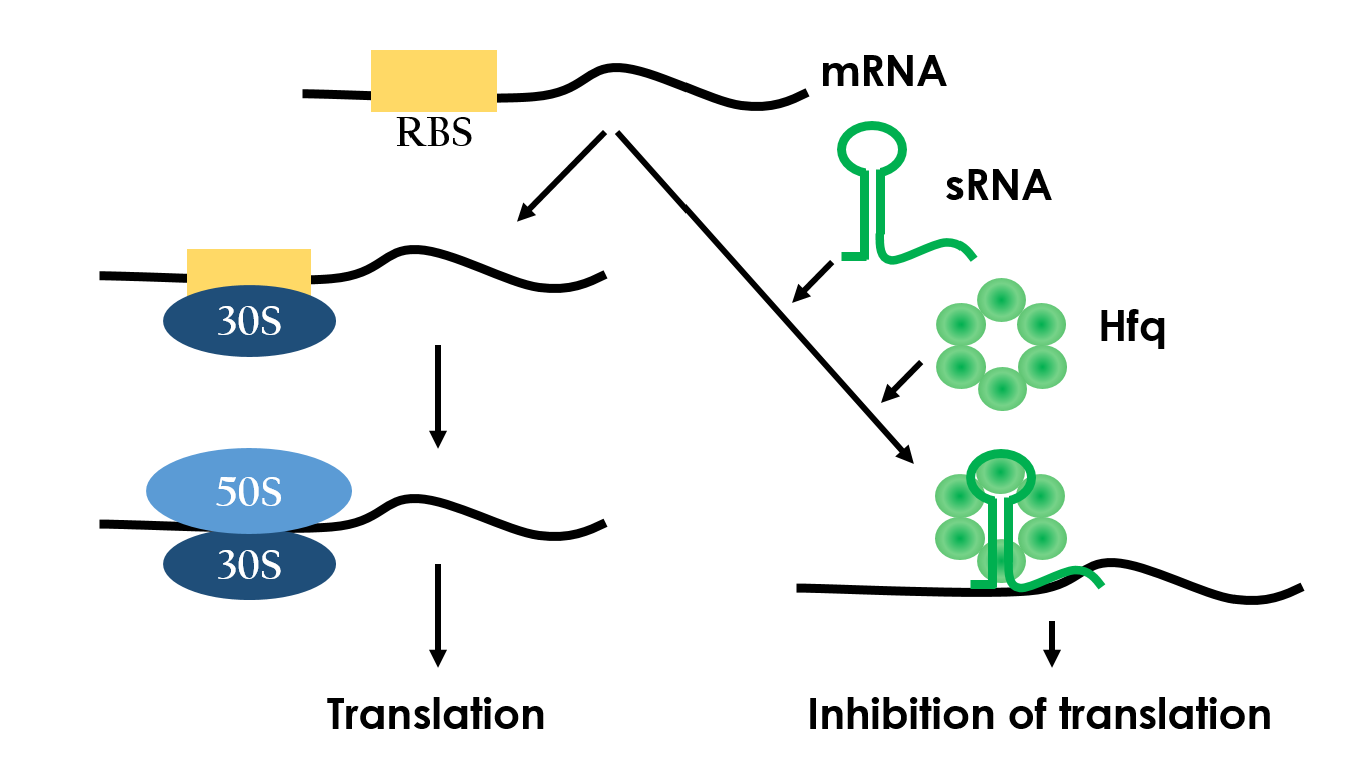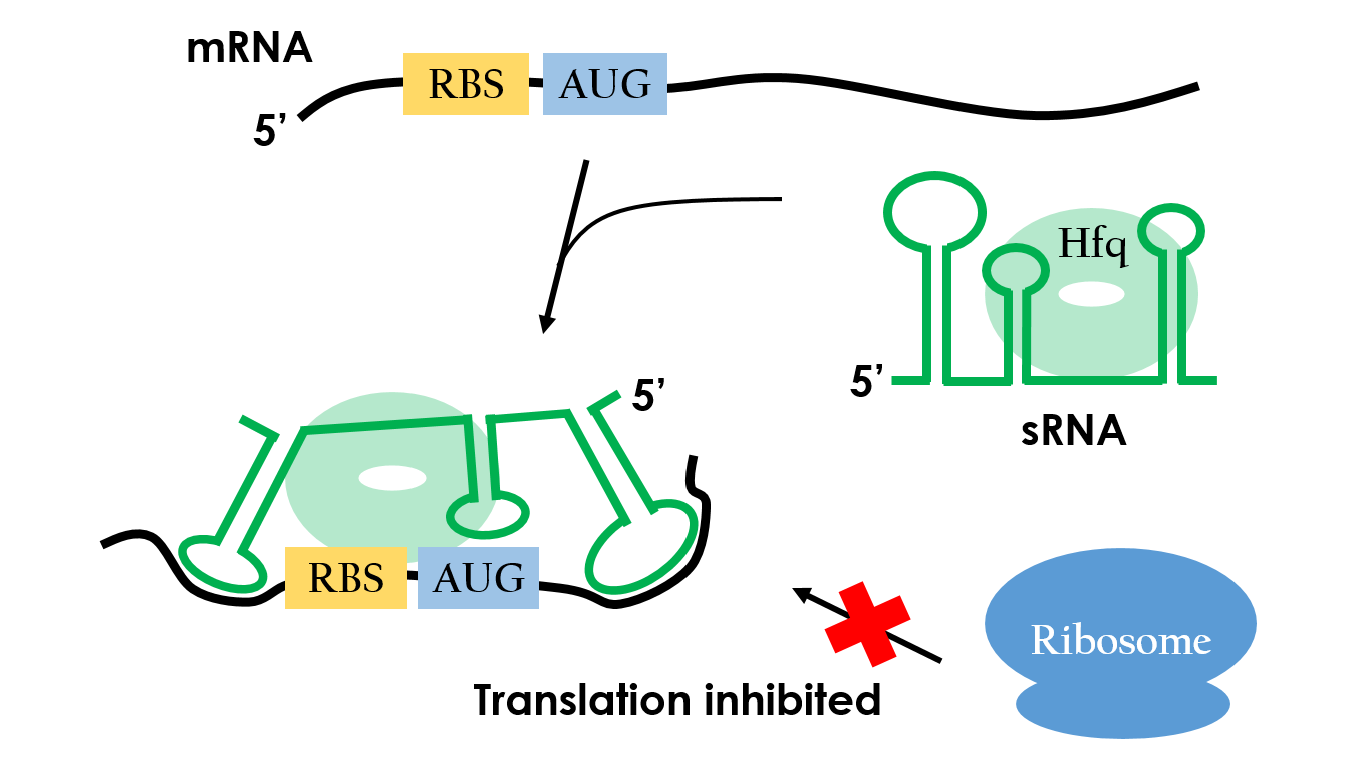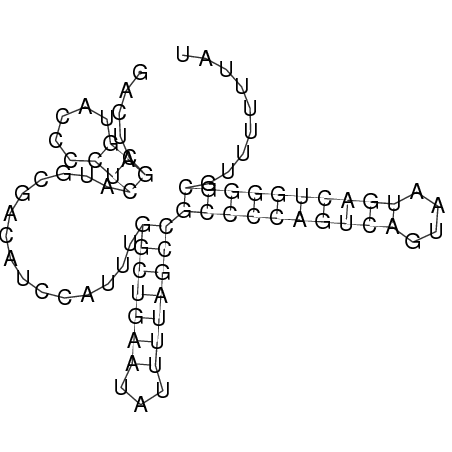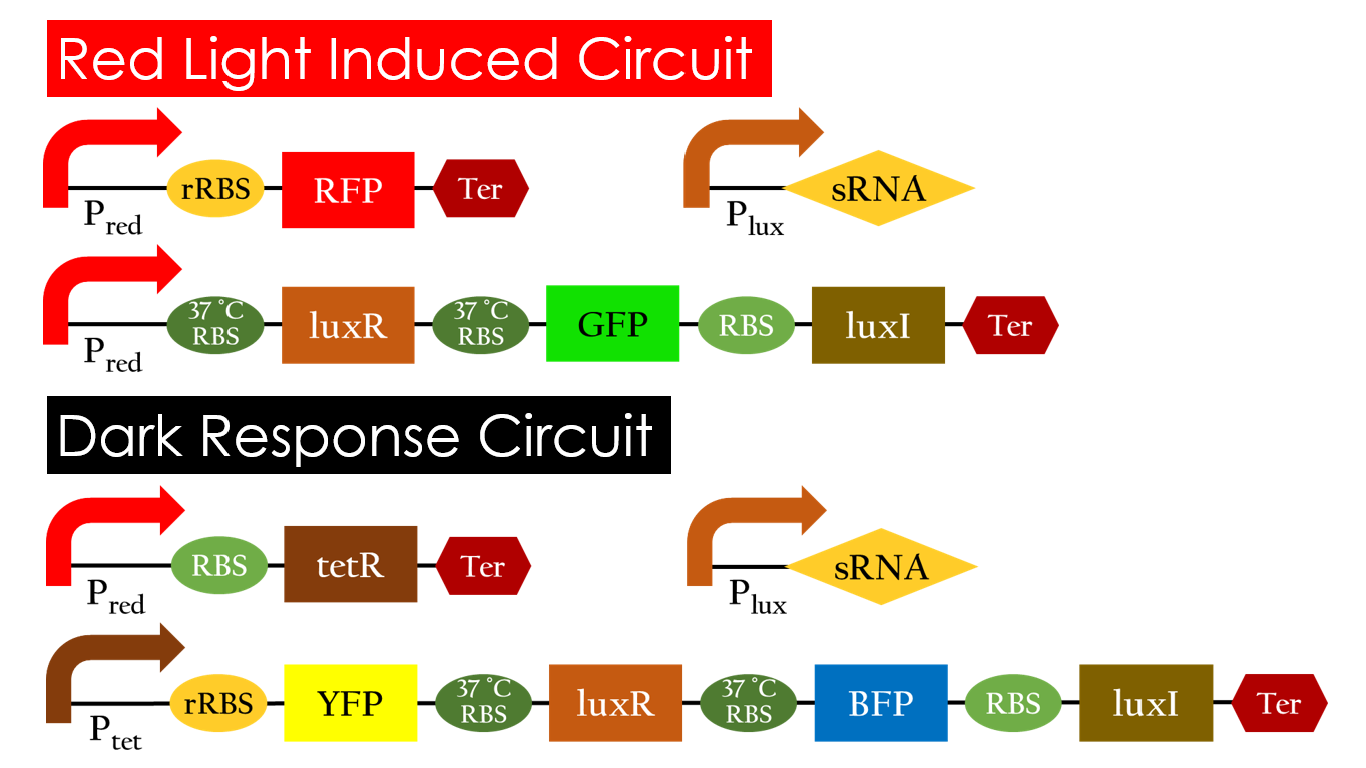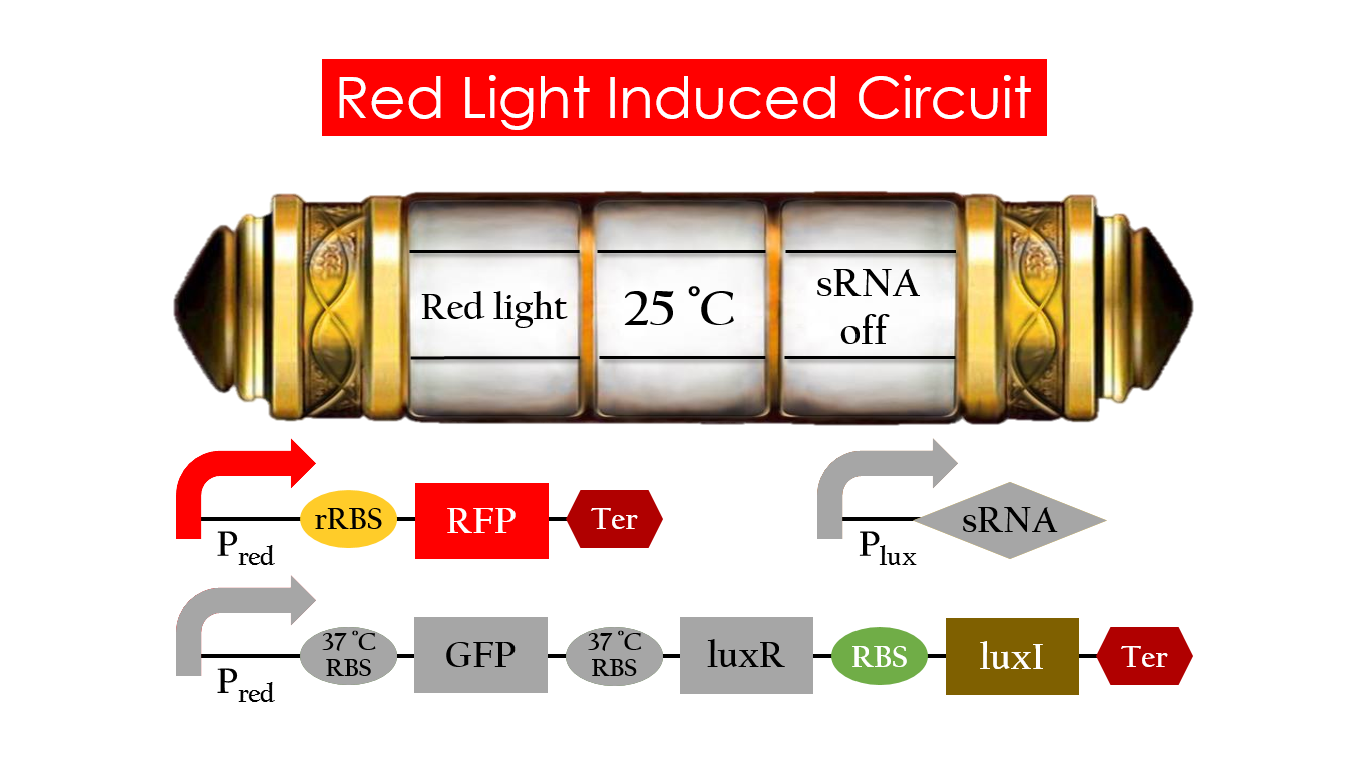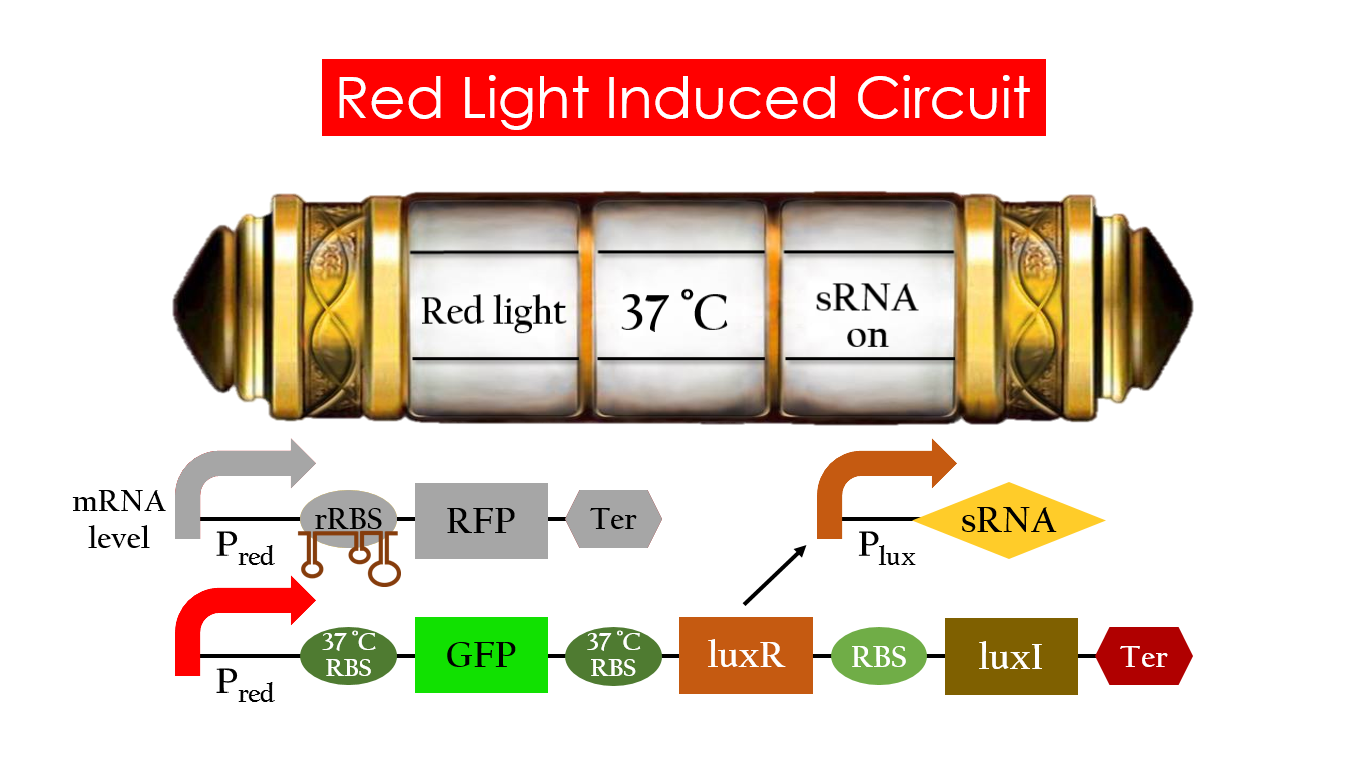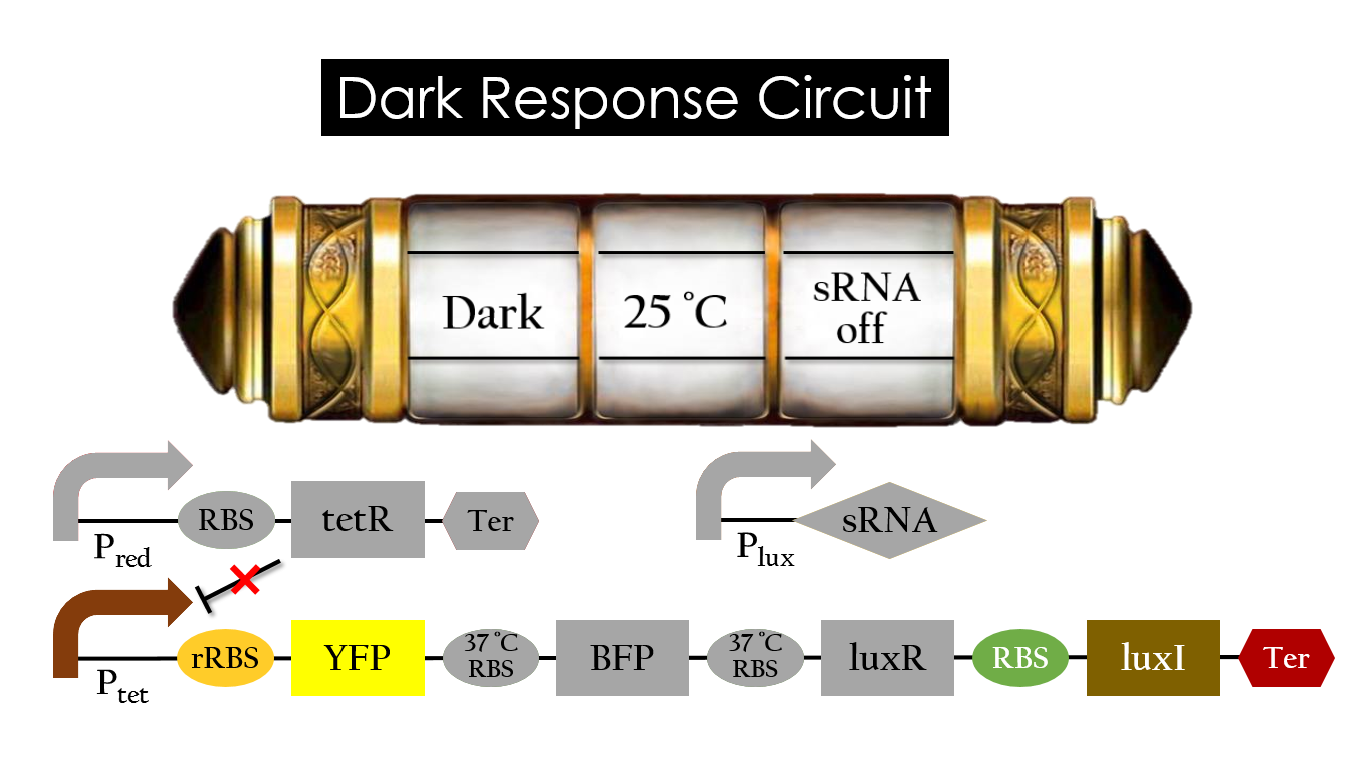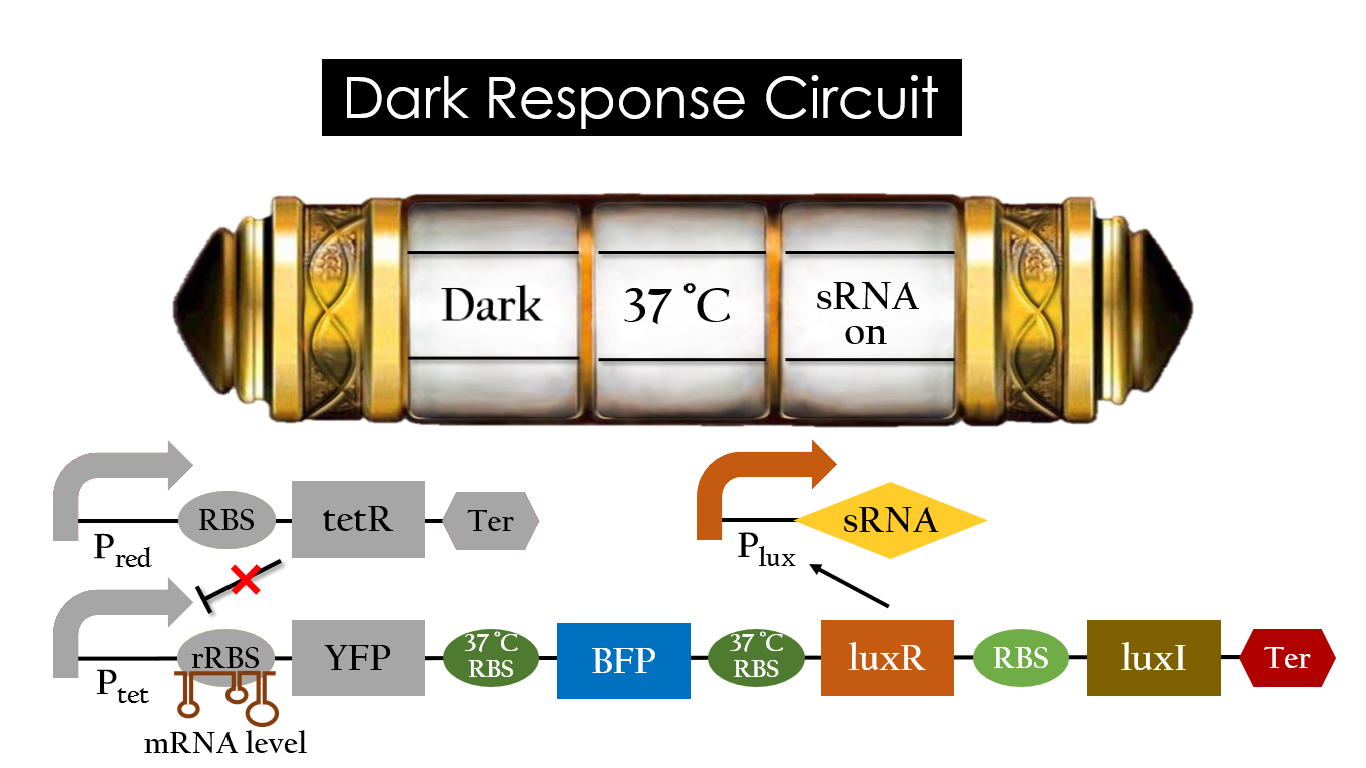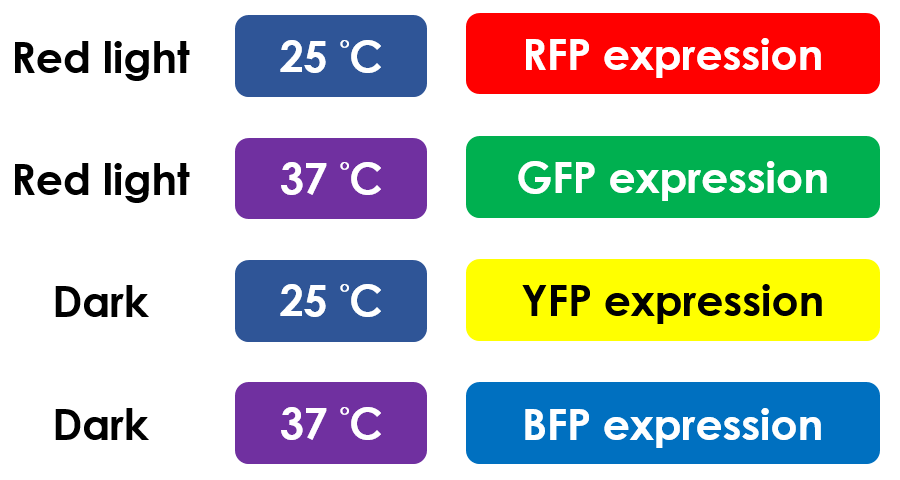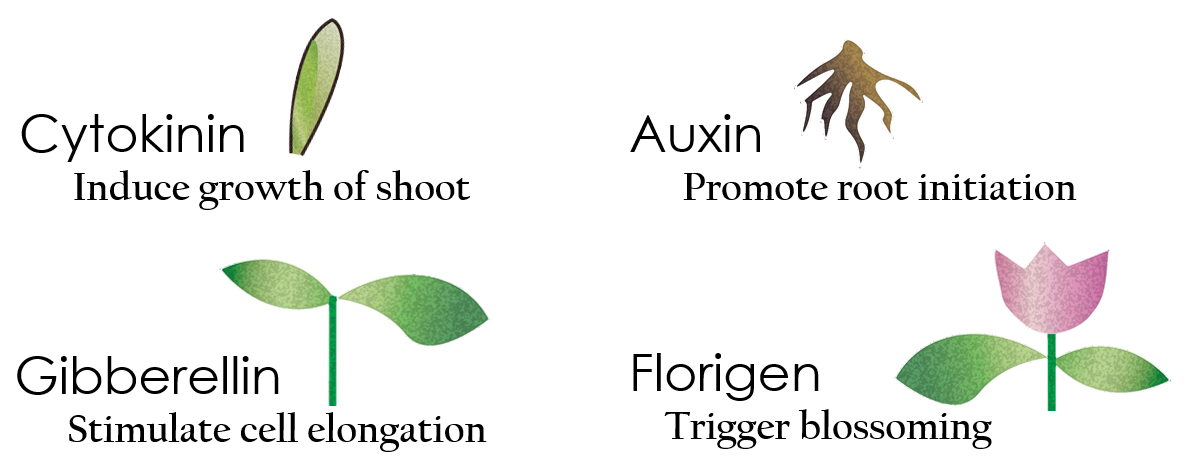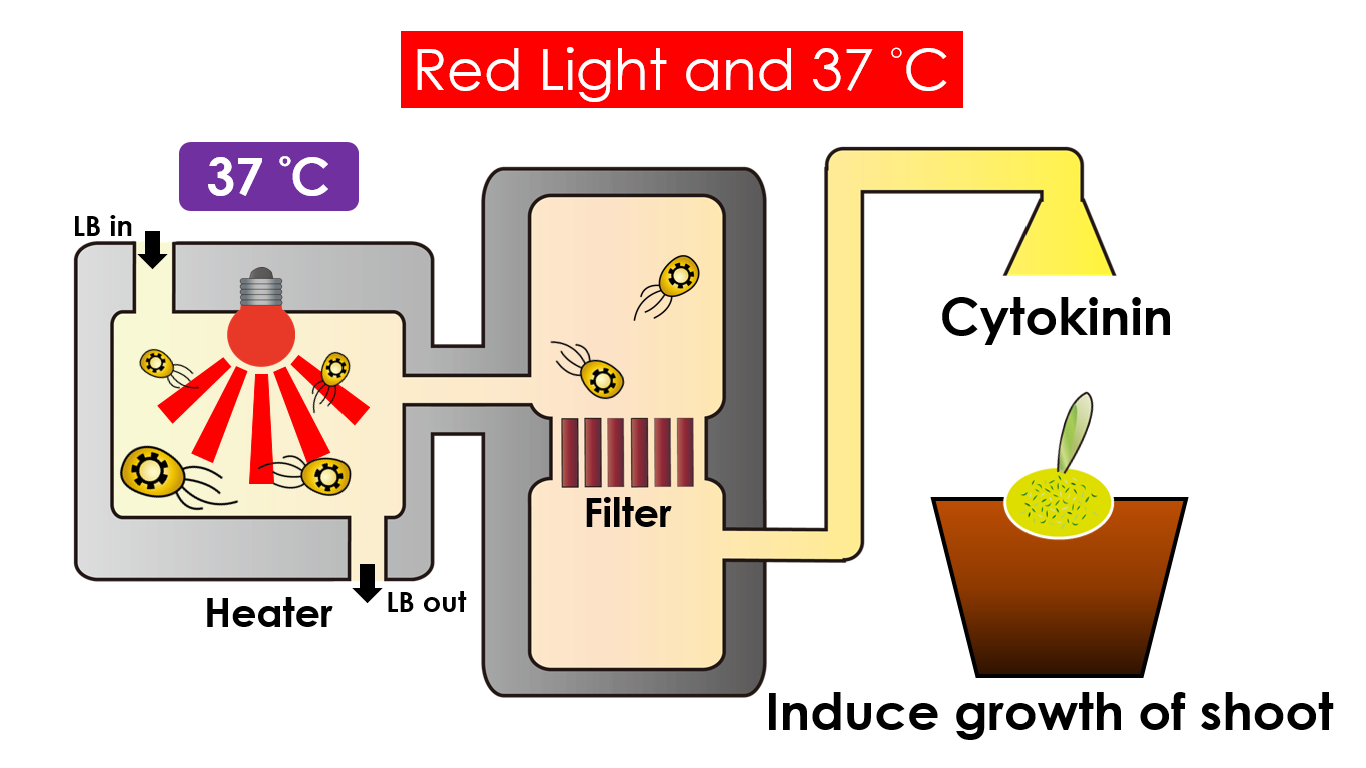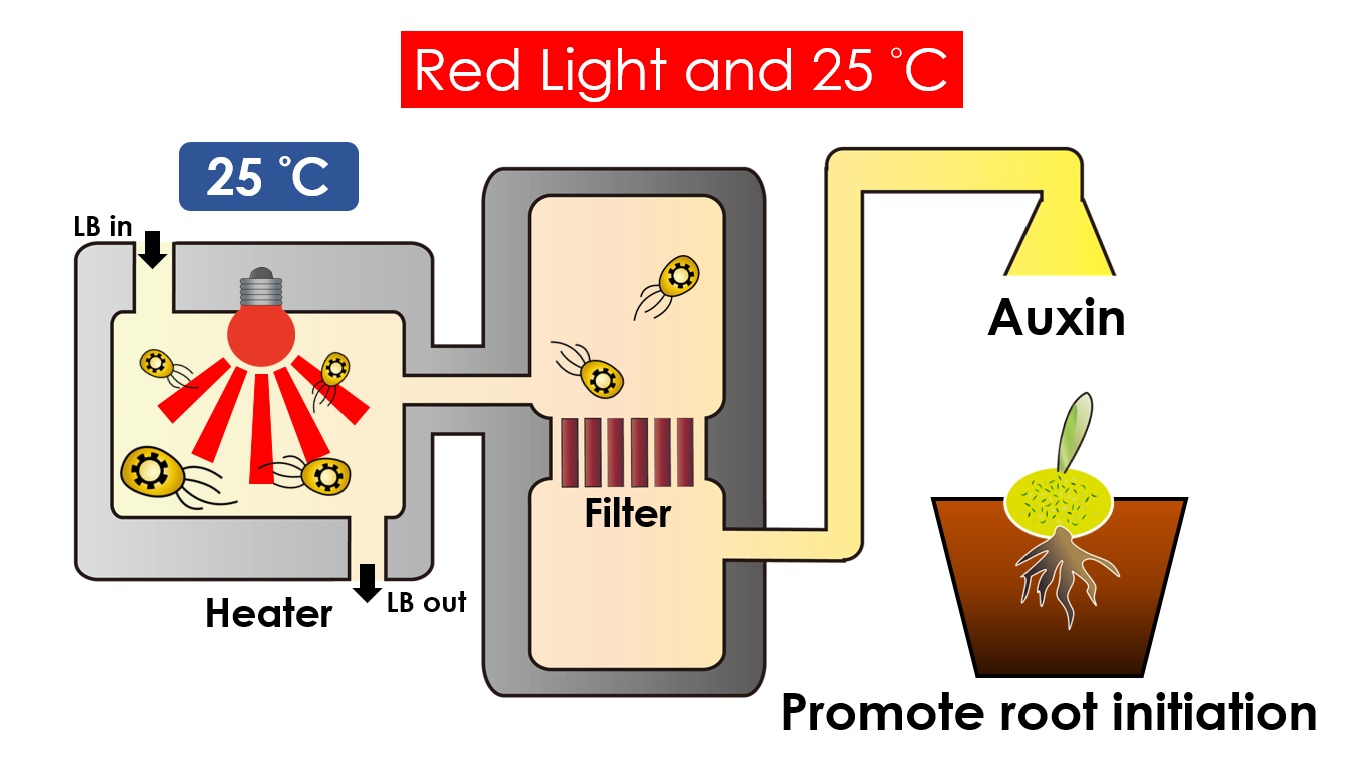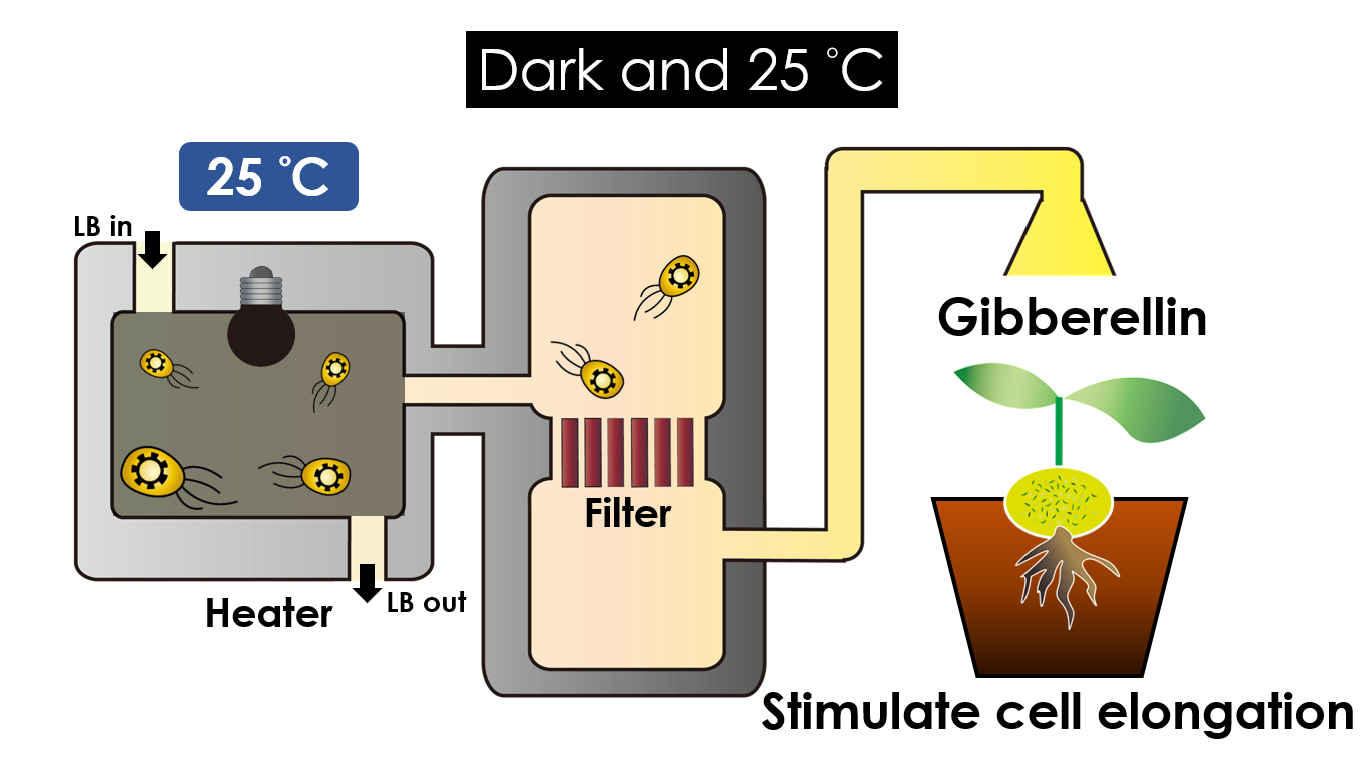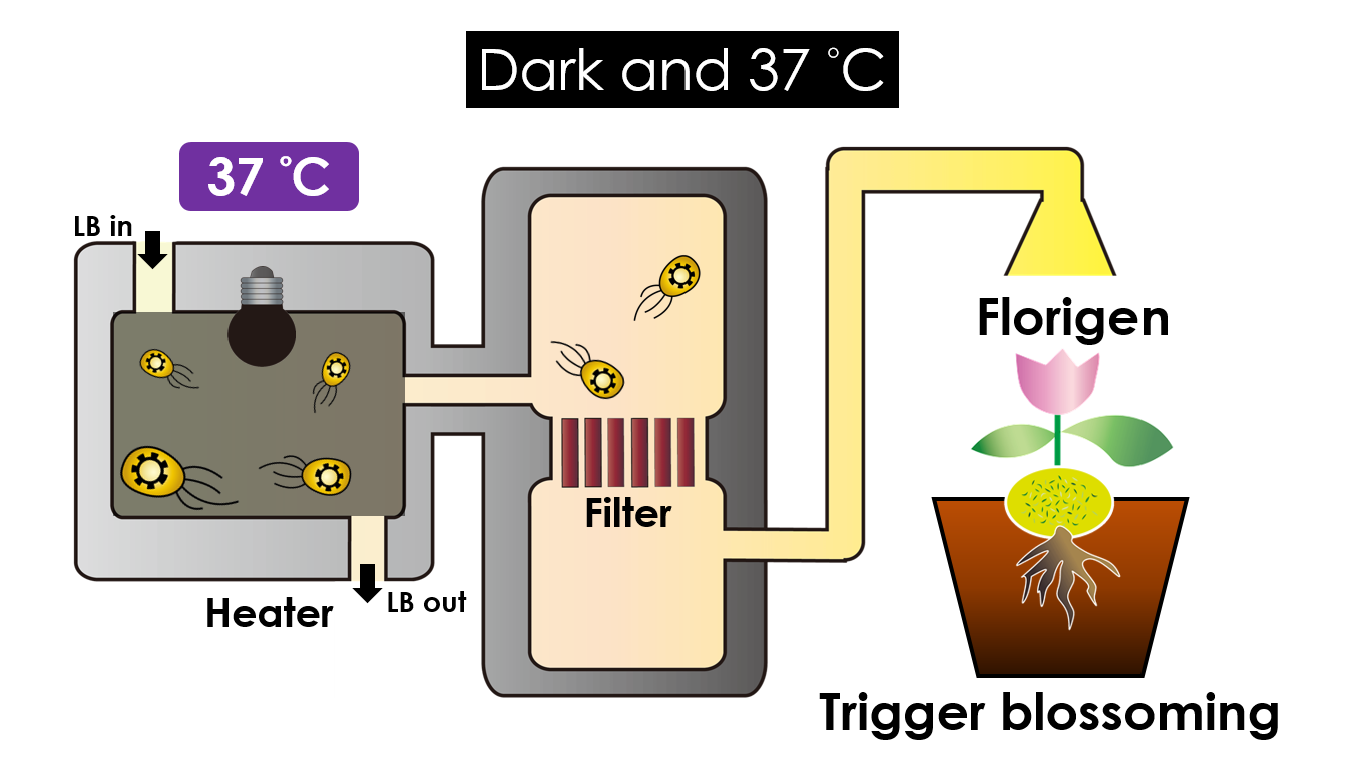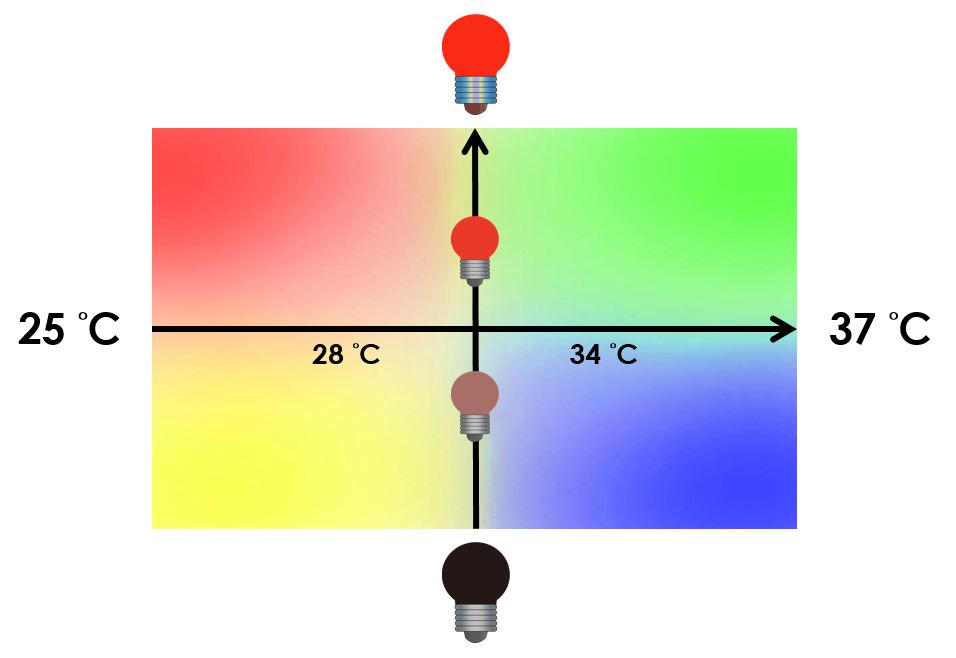Team:NCTU Formosa/project
From 2013.igem.org
(→Mechanism) |
(→Future Work) |
||
| Line 240: | Line 240: | ||
===Future Work=== | ===Future Work=== | ||
| - | The multiple regulated-system we have created in this project consists of two different parts: light induced part and dark induced part. Each part regulates two different genes, resulting in a total of four genes that can be regulated. By adding new parts to the system, it is plausible that the system can regulate more genes. We tend to do that by employing more light sensing promoters. | + | The multiple regulated-system we have created in this project consists of two different parts: light induced part and dark induced part. Each part regulates two different genes, resulting in a total of four genes that can be regulated. By adding new parts to the system, it is plausible that the system can regulate more genes. We tend to do that by employing more light sensing promoters. By adding each light sensor, we would be able to regulate two more different genes by employing regulation mechanism of 37°C RBS and sRNA. |
====Application==== | ====Application==== | ||
Revision as of 16:06, 25 September 2013
A multiple regulated-system was built using three different regulation mechanisms including red light, temperature, and sRNA. In other words, it is multitasking genetic engineered machine that can express a variable genes depending on the different command given.
Contents |
Introduction
新增內容夾在這裡面
The majority of the previous iGEM projects focused on expressing certain genes to achieve a specific task such as sensing a certain phenomenon. This year, we took a step forward in exploring the potential of E. coli, thus building a system that is capable of regulating multiple genes. The system, so-called E.colightuner, is built by three regulated-systems including light regulated-system, temperature regulated-system, and sRNA regulated-system. We used noninvasive factors such as red light and temperature to create different conditions under which E. coli can express different genes. We also introduced a new sRNA regulated-system that hasn't been widely applied in iGEM before.
E.colightuner is just like a machine that can process different tasks depending on the commands given. In this case, the gene expression of E.colightuner is the task and its environmental condition is the command. By changing the the environmental condition, E.colightuner can express different genes. The advantage of building such a machine is to increase the convenience in expressing multiple genes. Instead of expressing different genes with different bacteria, we can express the genes with E.colightuner. This may ultimately lower the cost in expressing different genes.
We tend to apply E.colightuner to agriculture. By expressing different hormones required by different stages of plant growth, E.colightuner can aid plant growth. With that said, we built a device that can flower the desired hormones to plants. This device can be applied to any plantation, and it is simple to manipulate. With more efforts, we believe that E.colightuner can raise the potential values of E.coli.
Light-regulated system
Introduction
新增內容夾在這裡面 改過以後newc改成newd
Light, causing the change of day and night, is a common energy of nature. Light is indispensable for many organisms such as plants and photosynthetic bacteria to growth. For the purpose of sensing the light, bacteria use either photocaged molecules and enzymes or photoreceptors with a light-sensitive domain harboring a small light-absorbing ligand called chromophore. And the chromophore could absorb light in a defined wavelength in order to initiate a light triggered reaction. These light-mediated control of gene expressions such as protein function and metabolic process in living microbes is now a developing field of research. For instance, light sensor is a popular researching field in iGEM.
In E.colightuner, we use the light sensor as a switch when turning our pathway on or shutting down. Light provides an independent control with the noninvasive and spatiotemporal changes. Different from common promoters, the light promoter senses the specific wavelength of light directly. That means we don't have to add extra substrates to induce the promoter. This way, we could achieve a pathway regulation system without changing the reacting environment like adding extra induction substrates.
Mechanism
We want to create a light sensor in Escherichia coli, but there's no photoreceptors in E.coli. Therefore, we introduce a "two component system" (Cph8) including a photoreceptor (Cph1) that is from Synechocystis .
The chimera Cph8 is consist of the phytochrome Cph1 and the histidine kinase domain and response-regulator from EnvZ-OmpR. When there's no red light, Cph8 autophosphorlates ompR, then phosphorylated-ompR activates the Pompc and turns on the downstream gene.
The phytochrome Cph1 from the cyanobacterium Synechocystis sp. PCC6803 is the first member of the plant photoreceptor family that has been identified in bacteria. It is a dimeric receptor protein that binds phycocyanobilin (PCB) as a red-light absorbing chromophore. Cph1 is able to reversibly switch between a red-light absorbing ground state (Pr) and a far-red-light-absorbing photoactivated state (Pfr). in other words,Cph1 is inactivated under red light , activated without red light . 4,5
EnvZ, a dimeric osmosensor, is a multidomain transmembrane protein and one of the best characterized two-component histidine kinases from E. coli.Besides the periplasmic receptor domain that is flanked by two transmembrane helices, it possesses a C-terminal 228-residue histidine kinase domain that is located in the cytoplasm6. Upon changes of extracellular osmolarity, EnvZ specifically phosphorylates its cognate response regulator OmpR, which, in turn, regulates the Pompc 7.
The fusion protein Cph8 was generated to combine the light-sensing function of Cph1 with the output function of EnvZ,which is the phosphorylation of the response regulator OmpR, followed by the activation of the ompC promoter
Red light inhibits the autophosphorylation of Cph8 and turns off the gene expression. Figure 3 depicts this mechanism.8 In this case,lacZ is the reporter gene.
The functional expression of a phytochrome domain(Cph1) in E. coli requires the biosynthesis of the respective bilin chromophore PCB (Figure 4). Two phycocyanobilin(PCB)-biosynthesis genes (ho11 and pcyA2) from Synechocystis encoding a heme oxygenase and bilin reductase, respectively, is essential to convert heme into PCB. Figure 2 depicts the phycocyanobilin-biosynthesis pathway.3
Design of Red promoter
Because the Pompc turns off when exposing to red light, we want to construct a promoter which can detect red light and turn on downstream genes. Therefore, we add the lacI and the Plac behind Pompc. In normal condition, the Pompc would turn on and the lacI expresses, then the product of lacI represses the Plac. In contrast, when exposing to red light, the Pompc would be repressed and the Plac turns on. Finally, we created a new promoter that can turn on under red light.
Exposing to red light, the phosphorylation activity is hindered so the promoter remains repressed and the downstream genes cannot be translated. Such negative control, however, is more complicated and less straightforward than a simple positive control. Therefore , we converted negative control of Pompc into positive control by building a biobrick called Pred.
In the presence of red light, Pompc is shut down and lacI cannot be expressed to repress Plac. As a result, Plac is activated and all the downstream genes can be expressed. In the absence of red light, Pompc is activated as phosphorylation is triggered and lacI is expressed. Consequently, lacI respressed Plac and the genes downstream cannot be expressed. By using Pred, we can achieve positive control using red light.
Reference
- part BBa_I15008;MIT Registry of Standard Biological Parts
- part BBa_I15009;MIT Registry of Standard Biological Parts
- Levskaya, A. et al .(2005). Engineering Escherichia coli to see light. Nature, 438(7067), 442.
- Kehoe DM, Grossman AR (1996) Similarity of a chromatic adaptation sensor to phytochrome and ethylene receptors. Science 273(5280):1409–1412
- Yeh KC, Wu SH, Murphy JT, Lagarias JC (1997) A cyanobacterial phytochrome two-component light sensory system. cience 277 (5331):1505–1508
- Dutta R, Qin L, Inouye M (1999) Histidine kinases: diversity of domain organization. Mol Microbiol 34(4):633–640
- Forst SA, Roberts DL (1994) Signal transduction by the EnvZ–OmpR phosphotransfer system in bacteria. Res Microbiol 45(5–6):363–373
- Thomas Drepper, Ulrich Krauss,Sonja Meyer zu Berstenhorst, Jörg Pietruszka, Karl-Erich Jaeger.(2011).Lights on and action! Controlling microbial gene expression by light. Appl Microbiol Biotechnol, 90:23–40 DOI:10.1007/s00253-011-3141-6
Temperature-regulated system
Introduction
It is not a dream anymore that "making the impossible possible" with the increase of modern technology. It is also a serious problem that what human has brought to Earth along with our civilization. Drastic environmental changes are inevitable due to the fact of massive developing industries. Temperature changing are one of the problems we need to confront.
Human cells are constantly subjected to changing environmental conditions. Comparing with chemical substances, temperature is more accessible, convenient and lower costing. Moreover, temperature is also less burden to the organisms. Therefore, few organisms use temperature as a regulating factor. A mechanism found in different organisms that makes the cell respond to thermal changes, for example, is the RNA thermometer.
An RNA thermometer is a temperature-sensitive non-coding RNA molecule which regulates gene expression. The expression of heat-shock, cold-shock and some virulence genes are coordinated in response to temperature changes.There are several systems suggested in references that are based on RNA secondary structure. This structural transition can then expose or occlude important regions of RNA such as a ribosome binding site, which then affects the translation rate of a nearby protein-coding gene, so we can say that the RNA thermometers are just like riboswitches.
Apart from protein-mediated transcriptional control mechanisms, translational control by RNA thermometers is also a widely used regulatory strategy.
Mechanism
RNA thermometers are identified in the 5' UTR of messenger RNA, upstream of a protein-coding gene. They are able to occlude the ribosome binding site (RBS) and prevent translation of mRNA into protein.
Unlike normal RBS, the 37°C RBS has a unique or rather stable hairpin structure which shaped like a lock. If the temperature drops below 37°C, the base-pairing neucleotides on the RNA will form a stable secondary hairpin structure, occluding the Shine-Dalgarno sequence thus disabling the ribosome to bind. The base-pairing of this RNA region will block the expression of the protein encoded within. Since the structure is sustained by base pairing, heat can be employed to break the hydrogen bonds. So when it reaches 37°C , the bonds will be broken and the hairpin would be unfolded, causing the Shine-Dalgarno sequence to be exposed and permitting the binding of the ribosome, which then starts the translation. This means that by raising temperature to a certain threshold, the 37°C RBS can function as a normal RBS. In this way, gene expression can be regulated on the RNA level by temperature.
Design
An RNA thermometer in the 5'-UTR of the Salmonella agsA gene, which codes for a small heat shock protein that can be used for temperature sensitive post-transcriptional regulation, initiating translation at 37°C. Transcription of the agsA gene is controlled by the alternative sigma factor σ32. Additional translational control depends on a stretch of four uridines that pair with the SD sequence, so they are named "FourU". They repress translation of this protein by base-pairing with the Shine-Dalgardo sequence of the mRNA. This prevents ribosomes from binding the start codon.
We used the RNA thermometer to build up a low-temperature released system to control the expression of targeted protein. A specific ribosome binding site (RBS) BBa_ K115002 with high translation activity at high temperature(> 37°C) and low translation activity at room temperature was used to design the temperature-dependent genetic circuit in E. coli, with a green fluorescent protein (GFP) used as the reporter protein.
In our project, we use this 37°C RBS in both red light induced circuit and dark response circuit and it is related to the production of GFP and BFP. We use this 37°C RBS to design our project because we want to use different conditions to produce different substances. Therefore, the characteristic and sensitivity of 37°C RBS is just fit in our purpose which we want to multiple regulate our system through temperature.
Reference
- Torsten Waldminghaus, Nadja Heidrich, Sabine Brantl and Franz Narberhaus .(2007). FourU: a novel type of RNA thermometer in Salmonella . Molecular Microbiology , 65(2): 413–424 DOI:10.1111/j.1365-2958.2007.05794.x
- part BBa_K115002;TUDelft Registry of Standard Biological Parts
Small RNA-regulated system
Introduction
Base pairing offers a powerful way for one RNA to control the activity of another. Both prokaryotes and eukaryotes have many cases which a single-stranded RNA base pairs with a complementary region of an mRNA. As a result, it prevents expression of the mRNA.
RNA interference(RNAi), also called post transcriptional gene silencing, is a process in which RNA molecules inhibit gene expression by destroying specific mRNA molecules. In 2006, Andrew Fire and Craig C.Mello shared the Nobel Prize in Physiology or Medicine because of their study on RNA interference11. This powerful gene silencing tool in eukaryotes has been used in many research. As their counterparts in bacteria, small non-coding RNAs(sRNAs) are important regulatory roles.
Small RNAs (sRNAs) have become increasingly significant in playing the role of bacterial gene regulation. Most sRNAs interact with the targeted mRNAs by imperfect base pairing, reducing the translation efficiency and recruiting chaperones such as Hfq for translation termination. The sRNAs would bind on the target with some of it's own sequences wind to create hairpin-like structure, and the chaperons would stuck between the hairpins in order to protect the sRNA-mRNA combination from degrading. In the end, sRNAs regulate gene expression by forestalling translation. It is an effective and specific regulated-system that functions under RNA level. Since this regulated-system has already been employed in vivo, it is necessary to design artificial sRNA that targets specifically to desired genes. This way, we can prevent the sRNA from affecting undesired genes.
Unlike the regulated-system popular used in iGEM projects(e.g., Ptet & tetR, Plux & LuxR, etc.), sRNA regulated-system seems more efficient. Because the inhibition works under RNA level, which means the energy wasted in E. coli is less than other system(producing proteins to regulate).
Figure 8 depicts how the small RNA chaperone, Hfq, associates with the small RNA and represses a target mRNA.12
Mechanism
How the small RNA regulate gene expression? Figure 9 shows the mechanism of repression of one target mRNA. The small RNA has three stem-loop double stranded RNA structures, and the loop closest to the 3’ terminus is complementary to a sequence preceding the initiation codon of target mRNA. Base pairing between small RNA and target mRNA prevents the ribosome from binding to the initiation condon, so the translation would be repressed.13,14
Design
We have designed two artificial sRNA each modify from different paper.The sRNA-1 is based on afsRNA ARlacZ1,which is created by Hongmarn Park and his colleagues.15 SibC is a small RNA sequence which is already found in E.coli. Hongmarn Park and his colleagues change few A-U base pairs of SibC into G-C base pairs to make ARlacZ1,in the purpose to let the combination of the artificial RNA and its target more tight. After then, they try to change to 9 different location of target-recognition sequence to test the effect on gene silencing.Our design is modify from the RNA sequence which has the best effect: ARlacZ7. In accordance with afsRNA ARlacZ7, we change the target-recognition sequence to finally complete Our sRNA-1. We also use another
記得下面補兩個sRNA的sequence 和結構圖哦
The sRNA employed in this project was picked from a library of artificial sRNA that was constructed by fusing a randomized antisense domain of Spot42, the scaffold that is known to recruit the RNA chaperons. The sRNA we picked contains a consensus sequence, 5’-CCCUC-3’, that can base pair with the SD sequence due to complementarity. This sRNA, as expected, effectively regulates gene expression by reducing translation efficiency and recruiting Hfq. In addition, this sRNA shows high specificity against its targeted gene, ompF, as it doesn’t hold significant activity against other genes from E. coli genome (Sharma and others, 2011).
The sRNA picked is competent, but we hoped that it can target any desired gene. With that said, we designed a RBS by employing the sRNA targeting region from ompF and making the AUG codon sufficiently apart from the SD sequence for ribosome binding. By adding this RBS to the upstream of any desired gene, the gene can be regulated by sRNA.
Reference
- Xu, S.; Montgomery, M.; Kostas, S.; Driver, S.; Mello, C. (1998). "Potent and specific genetic interference by double-stranded RNA in Caenorhabditis elegans". Nature 391 (6669): 806–811 DOI:10.1038/35888
- Jörg Vogel , Ben F. Luisi.(2011). Hfq and its constellation of RNA. Nature Reviews Microbiology, 9:578-589
- E.K. Jocelyn, S.G. Elliott , T.K. Stephen, "Lewin's Genes X.-10th ed.", Jones & Bartlett, Sudbury, MA, 2011.
- Karen M. Wassarman.(2002). "Small RNAs in Bacteria: Diverse Regulators of Gene Expression in Response to Environmental Changes". Cell, 109:141–144
- Hongmarn Park, Geunu Bak, Sun Chang Kim & Younghoon Lee.(2013). "Exploring sRNA-mediated gene silencing mechanisms using artificial small RNAs derived from a natural RNA scaffold in Escherichia coli". Nucleic Acids Research,Vol. 41, No. 6, 3787-3804 DOI:10.1093
- Vandana Sharma, Asami Yamamura & Yohei Yokobayashi.(2011). "Engineering Artificial Small RNAs for Conditional Gene Silencing in E. coli". ACS Synthetic Biology
Mechanism of the E.colightuner
Introduction
This is the pathway we designed by using the three different regulating factors. We tend to set up four conditions for the E.coli to work by paring the light and the temperature controls. Distinguished by whether red light exists or not, the pathway is divided into two parts, the Red Light Induced Circuit and the Dark Response Circuit. We use four different fluorescent proteins as reporter genes to test that whether the switch of our pathway is successful.
Red Light Induced Circuit
At 30°C and under red light, Pred is activated for translation proceeding. However, ribosomes can only bind to the normal RBS, as 37°C RBS (tRBS) forms a hairpin structure, forestalling ribosomes from binding. The only gene downstream of the normal RBS is RFP, so only RFP would be expressed.
On the other hand, with red light, 37°C RBS unfolds at 37°C , resulting in the expression of both LuxR and GFP. LuxR would bind with AHL(converted by LuxI) to form a complex that activates Plux. The activation of Plux produces sRNA that binds to the normal RBS on mRNA level, blocking it from ribosomes. As a result, RFP would not be expressed and only GFP remains at 37°C.
Without red light, Pred would not be activated, and therefore, the red light induced circuit is completely shut down in the dark.
Dark Response Circuit
Pred activates in the presence of red light, producing tetR that represses Ptet. In other words, the dark induced part is inactive in the exposure to red light and active without red light. At 30°C in the dark, only normal RBS functions to express YFP while 37°C RBS remains as a hairpin structure.
At 37°C, however, 37°C RBS unfolds to express LuxR and BFP. Just like the mechanism employed in the light induced part, LuxR forms a complex with AHL to activate Plux that produces the sRNA to block normal RBS. This way, the YFP downstream of YFP cannot be expressed and BFP is expressed at 37°C.
Summary
This is the pathway summary of the E.colightuner. There is one kind of fluorescent protein in each condition we set. It means that we can control four gene expressions by using the E.colightuner. The only thing we have to do is changing the different environmental conditions for specifically expression.
Future Work
The multiple regulated-system we have created in this project consists of two different parts: light induced part and dark induced part. Each part regulates two different genes, resulting in a total of four genes that can be regulated. By adding new parts to the system, it is plausible that the system can regulate more genes. We tend to do that by employing more light sensing promoters. By adding each light sensor, we would be able to regulate two more different genes by employing regulation mechanism of 37°C RBS and sRNA.
Application
Taiwan is renowned for Phalaenopsis, producing more than 35 million Phalaenopsis each year. There is no doubt that Taiwan has become "The Kingdom of Phalaenopsis". The technique we usually use to grow Phalaenopsis is plant tissue culture, thus, we intend to apply our system to plant tissue culture as well.
Tissue culture is the growth of tissues or cells separated from the organism. This is typically facilitated via use of a liquid, semi-solid or solid growth medium, such as broth or agar. Moreover, hormones are added to the growth medium with a view to meet what plants need during growth period. However, the hormones needed during each growing state are not the same. So, we need to figure out a device which can generate multiple hormones. By adding our engineered E.coli to the growth medium, the plants can gain multiple hormones secreted by E. coli under different circumstances. We chose four common hormones as our genes, Auxin, Cytokinin, Gibberellin, and Florigen.
Since Florigen(FT protein) is the protein which isn't produced by E.coli naturally, there isn't any secretion system in wild type E. coli to transport Florigen outside of the cells. Though secretion by cell lysis is a possible method to solve this problem, we still seek for other ways in order not to let our E. coli die during the secretion process. Thus, we ought to create a secretion system which can help Florigen pass through the inner and outer membrane of E. coli. We have founded a system from 2012 Kyoto iGEM team called Twin Arginate Translocation (Tat) pathway, which can help sending Florigen through the inner membrane to periplasm. In Tat pathway, a Tat transporter recognizes TorA signal, and proteins having a TorA signal at their N terminals can get into the periplasm. Moreover, 2012 Kyoto iGEM team also found out that kil protein from λ phage can make holes on outer membrane, which then transporting Florigen outside of cells. In a word, with kil protein gene and the fusion of torA and FT protein gene in our biobrick, we can successfully transport Florigen out of the E. coli.
The use of Auxin is to induce the growth of shoot, but the excess amount will kill the plant. We want to reach the great amount which will promote the plant’s growth but not to kill the plant. After researching, the Imperial College London 2011 iGEM team also has the same problem. The following is their solution. They chose the native Auxin indole-3-acetic acid(IAA) to use, since the synthetic Auxin is more stable that it can live for weeks. IAA also exist the risk of toxic amount. To ensure the sufficient but not excess amount to promote the growth of shoot, they give a model to reach the greatest amount.
We intend to carry out our application with the device beneath. Cultured in the growth medium circulation, our engineered E. coli can absorb enough nutrition to express the desired genes properly. We also use a semi-permeable membrane, which allows hormones but not bacteria themselves to pass through, separating the bacteria from plant tissues. Thus, we keep the tissue culture medium sterilized.
Under red light and 37°C, Cytokinin will be produced. Cytokinin is a plant growth substance which can primarily induce cell growth and differentiation in plant roots and shoots. It can decrease apical dominance which will make the main stem grow better compared to other stems. In this way, all the stems are able to become stronger. Cytokinin can also signal lateral bud growth, which will make the plant bushier.
Under red light and 30°C, Auxin will be produced. Auxin can coordinate development from cellular, organs to the whole plant. Auxin molecules in cells may cause direct responses by stimulation and inhibitions of certain gene expressions. On the cellular level, Auxin is important for cell growth. It can induce axial elongation in roots and lateral expansion which can make the roots swell. For the whole plant level, it affects the shape of the plants. Because of the different functions, each organ has uneven Auxin concentration and causes specific shapes.
Under dark and 30°C, Gibberellin will be produced. Gibberellin is important in the elongation of cells. It causes the extension of stems by inducing cell divisions and elongations. A special characteristic of it is that it can produce more mass when the plant is exposed to cold temperature.
Under dark and 37°C, Florigen will be produced. Florigen is the key hormone to trigger plant blossoming. We use a promoter that can promote transcription of the FT gene, which then translate into FT proteins. FT proteins will then be transported via the phloem to the shoot apical meristem, where it will interact with the FD protein(transcription factor) to activate floral identity, thus inducing flowering.
The next big thing
On the other hand, we tend to optimize our system to achieve subtle control of the four gene expressions. We might be able to do this by taking the values between the limits we have set. Instead of 30°C and 37°C , we tend to take the values between, so we can create more conditions under which different level of expressions can be achieved. We can also vary the intensity of red light to control the level of expression. For instance, we can get different pigment outputs by tuning the temperature and varying the intensity of red light. The ultimate goal is to precisely control the level of expression of each gene.
因為Pred的直接性,在未來可以拿來測試被紅光、藍光的影響度?
Reference
- Team : Imperial_College_London -2011.igem
- Team : Kyoto -2012.igem
 "
"

